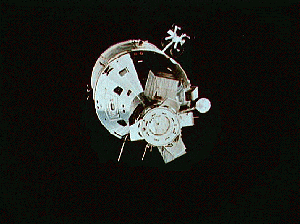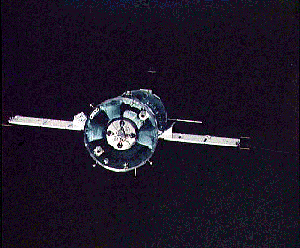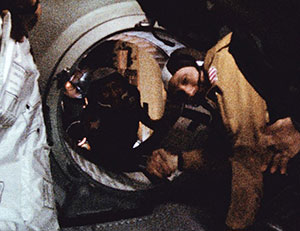Apollo-Soyuz Test Project
Apollo-Soyuz Test Project

The Apollo capsule ready to dock with Soyuz. (Credit: Soyuz crew)

The Soyuz capsule ready to dock with Apollo. (Credit: Apollo crew)

Astronaut Thomas P. Stafford (in foreground) and cosmonaut Aleksei A. Leonov make a historic handshake during the Apollo Soyuz Test Project docking mission in Earth oribt. (Credit: NASA)
The Apollo-Soyuz Test Project, or ASTP for short, was the first international manned spaceflight. It was designed to test the compatibility of rendezvous and docking systems for American and Soviet spacecraft, to open the way for international space rescue as well as future joint manned flights.
Lifetime: July 1975 (Launch of Apollo) - July 24, 1975 (splashdown of Apollo)
Country (primary): United States and Soviet Union
Primary Science
The Apollo-Soyuz Test Project included joint and separate scientific experiments for both crews. The primary mission for the project was that of international cooperation and testing the compatilibity of docking the American and Soviet spacecraft together. Additional science included extereme ultraviolet astronomy and an artificial solar eclipse to allow imaging of the solar corona.
Science Highlights
- Detection of extreme ultraviolet sources outside the solar system.
- Discovery of X-ray emission from supernova remnant MSH 14-63.
- Disocvery of pulsations from SMC X-1.

